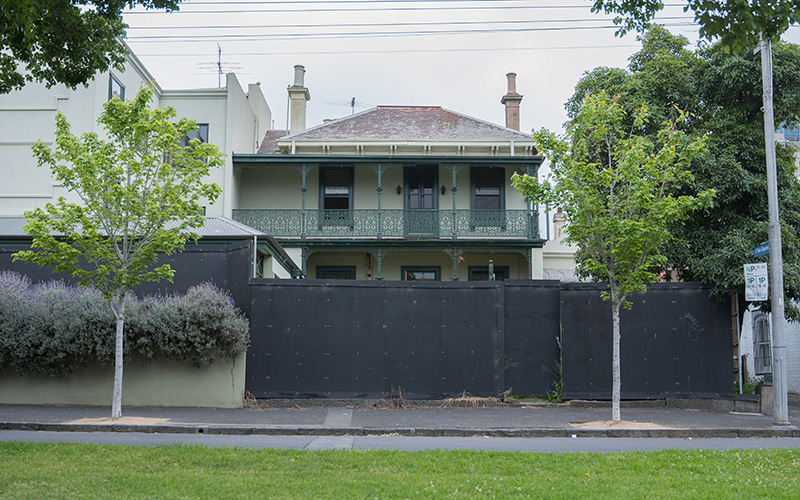Revitalisation plans for historic guesthouse revealed but residents say it will have “adverse impacts” on the neighbourhood
A boarded-up historic guesthouse in East Melbourne could get a new lease on life if a $4.5 million revamp plan is approved by the City of Melbourne.
The new owners of the Magnolia Court Hotel at 95-101 Powlett St want to refurbish the property by adding rooms, increasing the size of the restaurant and lobby areas, and “generally improving” the overall amenity.
The planning application comes as the existing guesthouse has sat dormant for the past 18 months after becoming a casualty of the pandemic, before being snapped up for $9 million in September 2020 by Primeland Group and Singaporean fund Baksh Capital.
But residents are uniting to fight against the proposal, arguing it would have “adverse impacts” on the amenity of the neighbourhood – with 83 objections having so far been lodged with the council.
East Melbourne Group planning convener Greg Bisinella said residents were “alarmed” to learn of the planning application, citing concerns of increased traffic and noise.
“Having 50-odd people sitting out until 11.30 at night in a residential street is going to be a terrible amenity impact and something all the neighbours are rightfully concerned about,” he said, adding there would be an increase in the number of hotel guests, restaurant patrons and associated taxi services and truck deliveries.
“There are also heritage impacts on a significant streetscape and limited access to residential properties along the adjoining lane.”
“It’s one of the most pristine heritage streets in all of Melbourne. In addition to that, there’s no precedent for having anything of that size in a residential zone.”
Under the plans, buildings would be partially demolished except for the existing heritage-listed two-storey Victorian era building which would be retained and enhanced “through a range of sensitive changes that seek to reinstate some of the features that have been lost over the years”.
The application proposes to build a new three-storey building to the rear of the existing modern three storey building with the addition of a car park stacker system and lift access to all levels.
It would see the number of the hotel’s rooms increased from 26 to 37 with the restaurant catering up to 90 patrons including guests and public visitors between the hours of 8am and 11.30pm. An outdoor terrace would accommodate 48 people with a closing hour of 10pm.
A new roof would also be built on the existing three-storey building while a glazed link would be created between the original two-storey Victorian era building and the existing three-storey building.
The application said the extent of the proposed demolition “largely relates to non-significant additions or are in areas that will not detract from the significance of the two-storey Victorian era building”.
Jason Barnfather, director of Squareback town planners, said the proposal was “considered to be appropriate for the site and suitably respectful of the heritage considerations contained within the Melbourne Planning Scheme”.
“Not only will the proposal provide an attractive outcome which is a significant improvement compared to the existing conditions, it provides modern amenities, employment opportunities and the architectural response is to be done in a manner that respects the amenity of the surrounding property owners,” he said.
Mr Barnfather told Inner City News that it was considering making amendments to the application to address the concerns of residents.
The plans were initially lodged with the City of Melbourne in March before an amended application was submitted on September 23.
Melbourne Deputy Lord Mayor Nicholas Reece said the application would “be very carefully considered by council officers”.
According to the East Melbourne Historical Society, the hotel was originally built in 1861 as the home of Mrs Ainslie’s School for Young Ladies which then moved around the corner to 179 Gipps St and became known as Ormiston College.
It was extended in 1888 before becoming the Kelvin Mansions apartment complex in 1926. And in 1951 the property was re-named Magnolia Court after an “impressive magnolia tree that once graced the front garden” •

Residents win fight to save laneway from development in East Melbourne





 Download the Latest Edition
Download the Latest Edition